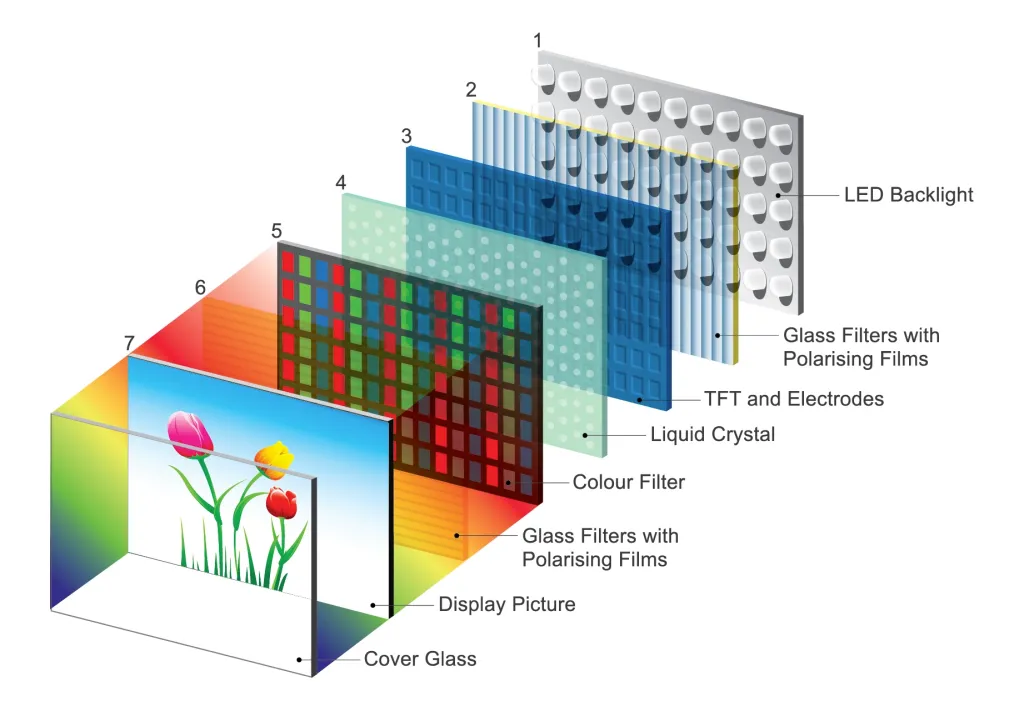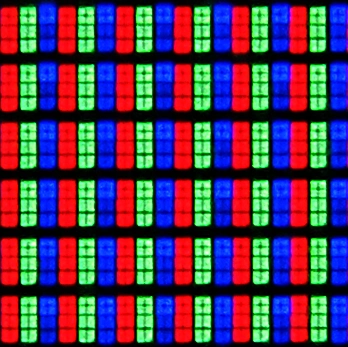There are so many different technologies for manufacturing TVs: LED-LCD, QLED, OLED, miniLED, microLED, QNED, and others, that it can be confusing. But we, as consumers, want only one thing: to buy a cheaper television and get good image quality.
However, not all televisions are the same. In some, the colors are brighter, the level of contrast is higher, and the black color seems truly black, not gray. In others, there are problems with all of the above.
Here is a question that one of my readers asked me: “Hello, Anatoliy, I bought an Insignia F30, but it seems to me that the black color is closer to dark blue than to true black. What’s the problem?”
If you have questions, you can also ask me at anatoliy@tab-tv.com.
I replied to this person by email, addressing specifically this television. But let’s talk in general: why do some LED televisions have poor black color?”
LED and LCD
Let’s start with the fact that almost no real LED TVs are on the market. Yes, you heard right. What is sold as an LED TV is an LED-lit LCD TV (or TV with LED backlighting). In true LED TVs, the LEDs should illuminate themselves, creating light and, accordingly, an image. For example, as is done by OLED TVs, where organic LEDs create light without backlighting.
What is sold as an LED TV is an LCD TV with LED backlighting. In simplified terms, such a TV consists of a backlight of blue LEDs covered with yellow phosphor, an LCD module, and color filters.
Here’s a visualization of the standard LCD panel structure:

Let’s consider each element separately: the backlight creates light that should be close to, ideally, white. How white this color will be depends on the specific TV, but the whiter it is, the better. Then, this light passes through the LCD module (Liquid Crystals) and color filters.
Color filters are what we usually call pixels. Each of them consists of three subpixels.

However, there are also other placements. For example, some cheap TVs may have white pixels instead of three RGB subpixels.
To create different colors, blue, green, and red must be mixed in certain proportions. LCD (or LED, as they are called) TVs have an LCD module for this.
In a simplified explanation, imagine the LCD module as blinds that close and open in various ways to allow light in a specific combination. If you close these blinds completely, no light will pass through, and the pixel will display a black dot. If fully opened, the light from the blue, green, and red subpixels will mix, and the pixel will be white. If some subpixels are ‘opened’ more, the TV can create other colors.
Now, more scientifically, the LCD module contains liquid crystals (a liquid consisting of very elongated molecules) that affect the polarization of the light passing through them. If a voltage is applied to the liquid crystal, it will create a polarization field with variable transparency, which we previously called ‘blinds.’
By controlling this polarization, the LCD module regulates how much light passes through the color filters, thus creating different colors. If the barrier is max and no light reaches the color filter, the pixel will remain black because no light will pass through it.
But why do we see not black but dark blue or gray? It’s all because some light from other pixels seeps into the ‘closed’ pixels, creating a glow effect. How exactly this effect will look depends on the type of LED backlighting and the display characteristics, but achieving a perfect black color is practically impossible.
Local dimming
One logical solution to the problem has been applied in many LCD-ED TVs: divide blacklight into zones instead of having a continuous backlight. The number of zones can vary depending on the specific TV model. In good TVs, usually mid-range or even high-end TVs, the dimming zones aren’t pre-specified but can be created depending on what’s happening on TV.
So, the TV reduces the brightness of the backlight in areas where there should be a lot of black or colors close to black. As a result, less light from the surrounding pixels falls on the black pixels, and the image looks more contrasted and has a better black color.
This works in a way that the TV determines the average brightness of the area and then adjusts the brightness of the backlight to achieve the best contrast ratio and display the best black color.
Now, most TVs have local dimming zones, which makes them significantly more expensive. Unfortunately, the Insignia F30, which the author of the letter asked me about, does not have the local dimming feature.
Although local dimming does not work well now, at least in the models I have tested, it is still better than a TV without it.
Here’s what affects how local dimming will work and how effective it will be:
- Size of zones: Cheap TVs usually have 4-6 local dimming zones, but the more, the better.
- Response speed: This is the main problem of many TVs with local dimming. It must work fast enough to keep up with changing the brightness of the backlight in dynamic scenes. Otherwise, a glow trail will be created, worsening the image quality.
- Intensity of change: Local dimming must be a sufficient compromise to prevent the backlight from changing drastically. Otherwise, too aggressive changes in backlight brightness will be bad for both dim (dark) scenes because they will lose detail and too bright scenes because they will also seem blurred.
The lit type
Another thing to take into account is the type of backlighting. There are several types:
Edge-LED (ELED). In LCD-LED TVs with Edge backlight, the LEDs are placed around the edges of the display, and the configuration of the LEDs can vary. This ranges from a single row of LEDs to two rows or other arrangements. Layers called light diffusers are used to spread the light across the entire surface of the display.
Local dimming in such displays does not perform well because it’s hard to control the zones because the light source is on the sides. EdgeLED is the cheapest type of backlighting, usually used in budget LCD televisions.
DirectLED (DLED). The backlight LEDs are directly behind the LCD module (or other layers, if present). They also use diffusion layers, but only to make the image uniform, without the ‘grid effect’.
In such televisions, local dimming performs quite well. With many zones and their proper configuration (so that the backlighting is not too aggressive and the response time is fast enough to change the backlight brightness), local dimming can produce a perfect effect, up to the point where the black color will be truly black. However, even the best local dimming will be noticeable, especially at the junction of zones. There, you might notice halos, light bleeding, or contrast issues. So, there should also not be too many zones because too many will create noticeable halos at their junction.
Are there LED TVs with a good black color?
The quality of black varies depending on the model, and some LED TVs have a good black color, thanks to adaptive local dimming, better LEDs, and an improved LCD module. However, an LCD TV, including LED ones, can never achieve the same black color quality as OLED.
But from my personal experience, I can say that the perfect black color is practically indistinguishable to consumers. If a person looks at a good (and it is important precisely a good) LED TV and an OLED TV, then the difference in black color does not seem so critical. Yes, it is still there, but it is not a significant difference in daily viewing especially when considering how different the prices are for OLED and LED televisions.





